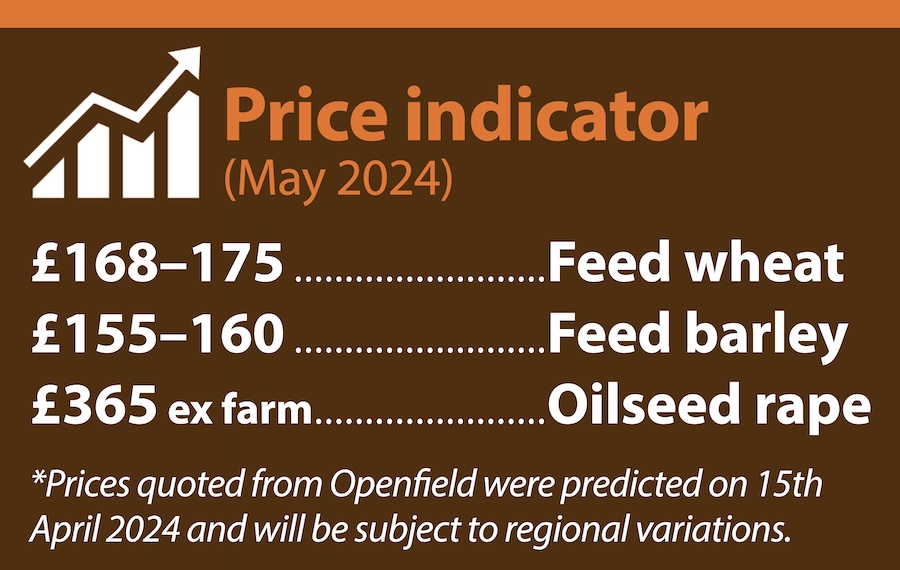Are reports over crop size enough to concern not just farmers, but also consumers?
29th April 2024
At this time of the year, it’s not just farmers looking at weather and crop prospects, but every consumer – be that one that uses combinable crops for feed, food or energy.

The concerns of farmers regarding prospects for the coming harvest have been aired through media outlets, but are reports over crop size enough to concern consumers? So asks Openfield’s head of research, compliance and shipping, Cecilia Pryce.
You may assume the answer is ‘yes’ – yet, in mid-April, the price of old crop wheat is dramatically lower than new crop. This price divergence isn’t just being seen in the UK, but in many global wheat and corn markets too. Using basic concepts of supply and demand and pricing, this would imply too much availability of wheat nearby and concerns about not enough availability of supply next crop year.
Consumers may be rattled by this, but the question is, how does a farmer deal with it? Can farmers financially afford to over-season grain? But, more importantly, is the grain in a fit state to over season? If UK consumers have already bought their needs until harvest and beyond – which may also involve a reasonable amount of imported high quality wheat or maize – then farmers may have few options left other than to over-season. By default, any over-seasoned tonnage will baluster any shortfall in the 2024 harvested crops caused by weather, but only time will tell regarding the impact it could have on new season values and, more importantly, when any correction in prices is felt.

Added weather volatility looks like something we are going to have to get used to nationally and globally; but, in order for the whole UK sector to deal with it confidently, I suggest Defra invests in real data which includes full farm size, soil types, topography, elevation and main field use matched with land areas in schemes etc.; and then, when we get the next weather event, be it drought or flood, we as a nation would have confidence as to the amount of primary commodity land affected. Until then it remains a guessing game; but if the data is collected, you never know – they may even offer crop insurance; but, more importantly, have confidence in the nation’s food security.
Fertiliser matters
Openfield’s fertiliser manager, Lucy Hassall says, as part of the clean air strategy, Defra has a target to reduce ammonia emissions by 16% by 2030. To help meet this target, they have focused attention on urea fertiliser due to the amount of ammonia that can be lost from this product through volatilisation if used incorrectly, particularly in dry and warm conditions. Ammonia is an air pollutant that is detrimental to human health and our natural environment; losses also reduce nitrogen use efficiency.
We have now entered the period where any urea-containing fertiliser must always be applied with an appropriate inhibitor. Urease inhibitors work by slowing down the conversion of urea into ammonia holding nitrogen in the ammonium form longer which is less volatile and more readily available for plant uptake. The only period that standard urea grades can be spread without an inhibitor is between 15th January and 31st March each year. However, there is the possibility of a derogation for the use of unprotected liquid urea outside of the restricted dates if FACTS qualified advisors can provide agronomic justifications if liquid fertiliser is incorporated by injection or within 48 hours of application by irrigation or cultivation. Incorporation as soon as possible after application and ideally on the same day would be more beneficial in reducing nitrogen loss. Liquid fertilisers that are targeted at foliar uptake can also be considered. There are liquid inhibitors available that can be added to non-inhibited product you may already have in the tank. There is no derogation consideration for solid urea grades.
The use of inhibiters can also be more cost effective than standard grades through nitrogen use efficiency as more product is utilised by the plant. For help or more information, please speak with your usual fertiliser supplier.
Read more arable news

